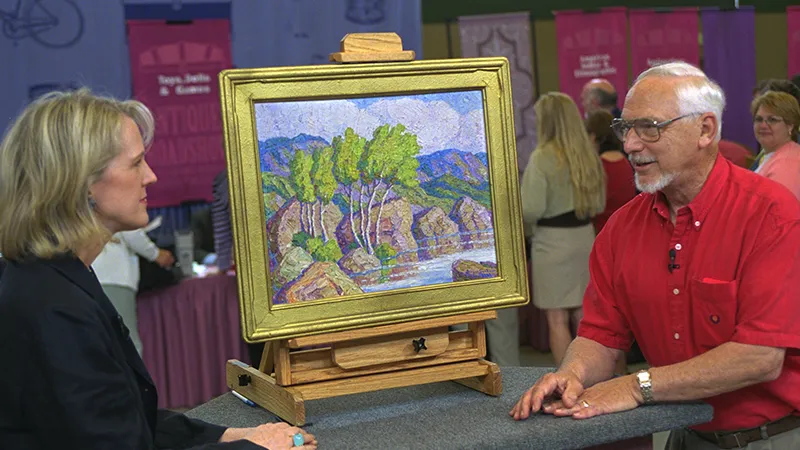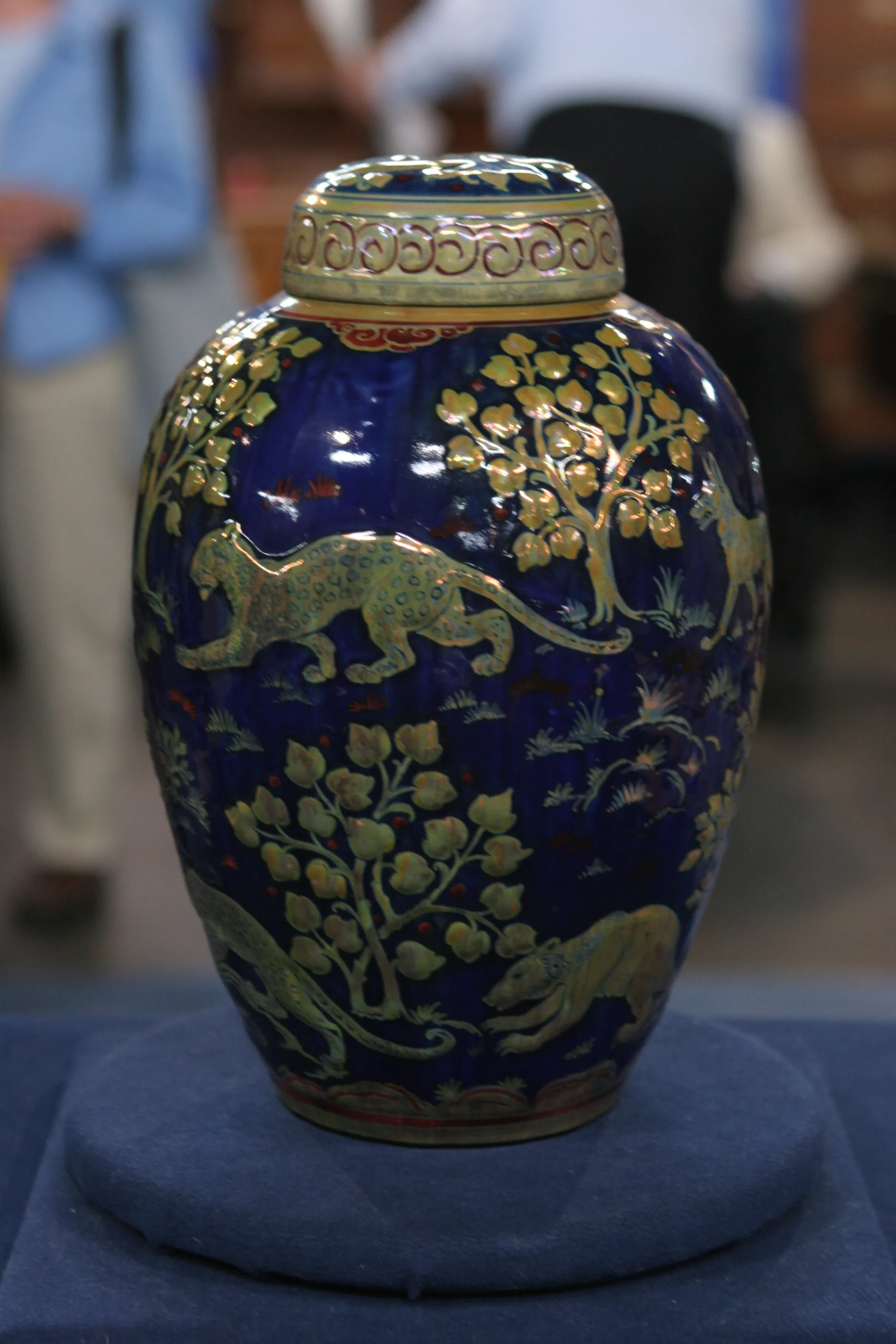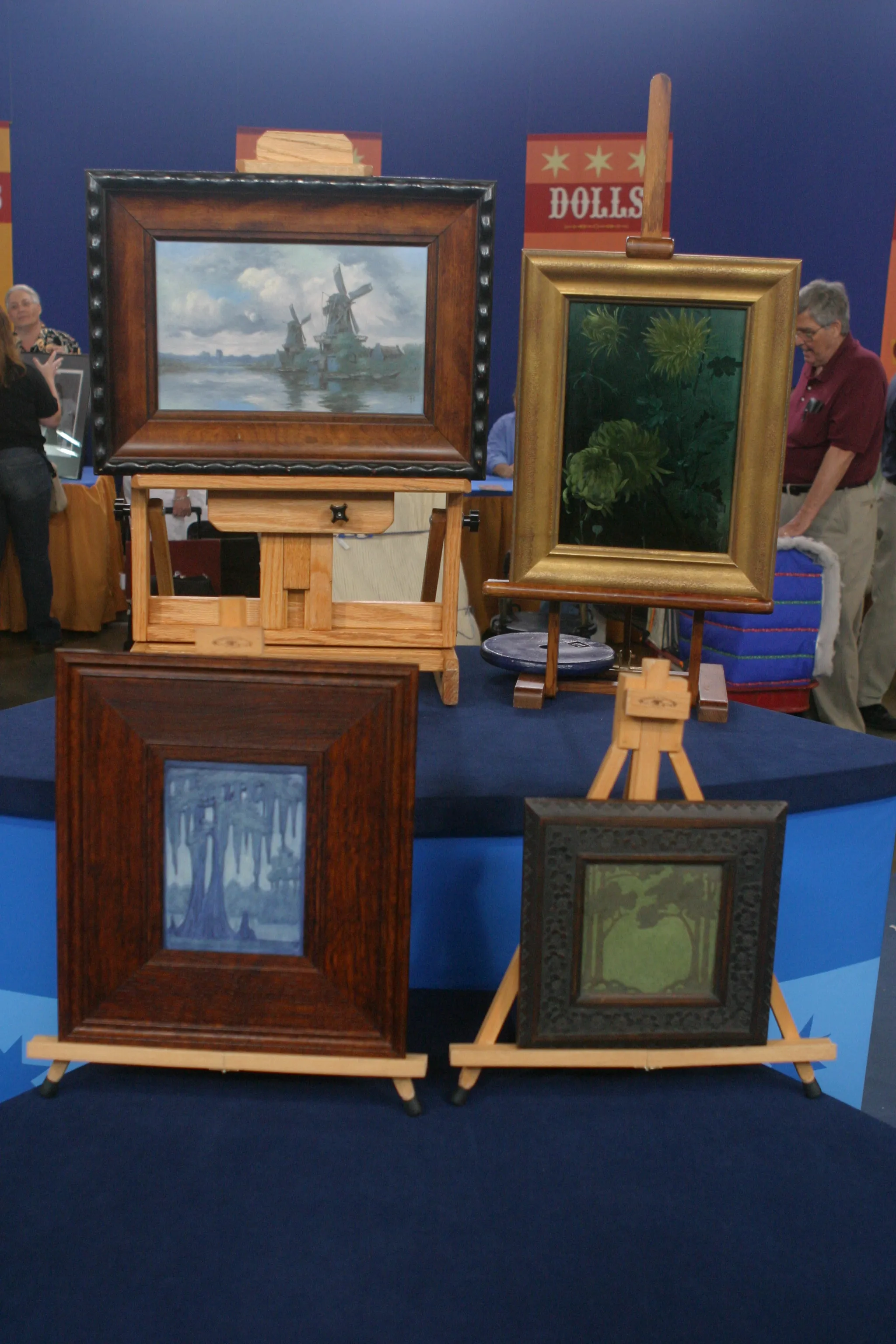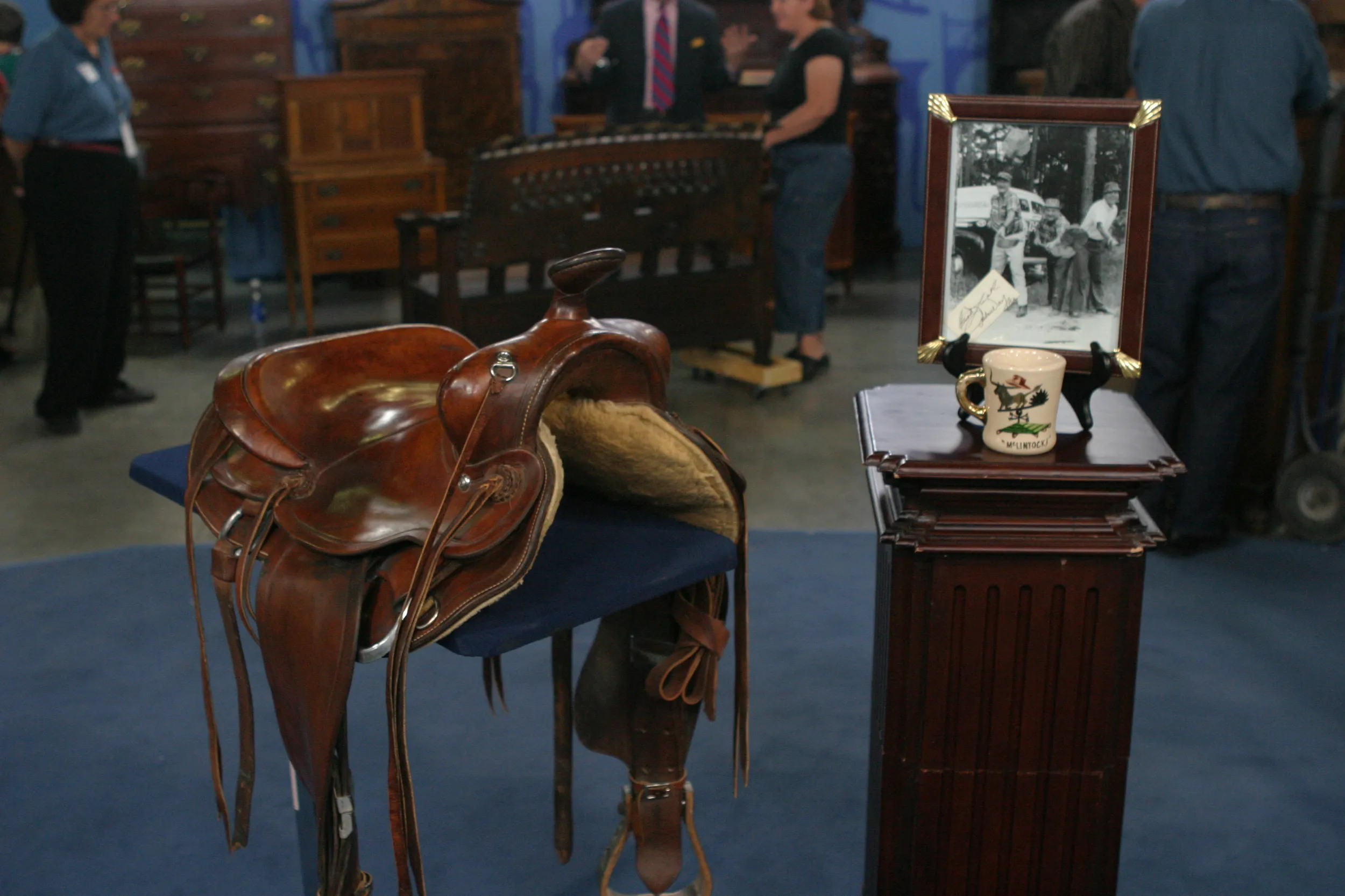GUEST: I got a call from a man in Philomath, Oregon. And he said, "I've got this piece of Walrath, and it's just great and you need to have that." And I thought, what is Walrath? I'd never heard of it. Never seen a piece. Looked at it, and finally I bought it for $100.
APPRAISER: And that was how long ago?
GUEST: 1977.
APPRAISER: Okay. There's a whole series of studio potters, small producers who were working out of studios, or schools, or colleges, or basements around the time of the Arts and Crafts period. And Frederick Walrath was one of those people. He studied at Alfred University under Binns, the famous Binns, Charles Fergus Binns, and later went off on his own, even worked at the famous Newcomb College pottery. But for a short while he worked in Rochester, New York, in the Mechanics Institute. In fact, this pot has the Walrath Pottery mark on it. It says "Walrath Pottery," and in the center is a little cartouche that's "M.I." for Mechanics Institute. And what he was famous for doing there was matte painting. And the thing about matte painting that makes it very difficult, you're essentially decorating with glaze. And what happens to glaze in the kiln is glaze gets hot and it runs down the surface of the pot. I mean, look at the sharpness of the line going down the side of this pot.
GUEST: Okay, it's very crisp.
APPRAISER: Walrath was very, very good at managing to get these matte glazes to stay very crisp and give you very sharp detailing in his work. Most pieces of Walrath pottery are not this large. When they are, they tend to be decorated in bands around the top, not having elements that trail all the way to the bottom. And they tend to be two-color pieces-- a background color, and then another color. This is three or four colors, so this is... in so many ways, this is such a good piece of Walrath. I've probably had 40 pieces of Walrath in 30 years, and that's probably most of what's out there. I will show you there is one small flaw, which is really relatively minor. It's a small chip on the base of the piece. That's the only strike against it. Otherwise, on every side this piece is fired perfectly. So I'd say on a scale of one to ten you have about a nine and a half piece of Walrath. The last one of these I had at auction was about two years ago. It was the same shape and size, but it had a banded decoration around the top, which is not as good. On the other hand, it didn't have that little nick on the bottom. And we had a $3,000 to $4,000 auction estimate on it, and we got $12,000 for it. So I would say that this is about a $10,000 to $15,000 piece of Walrath pottery on today's market at auction.
GUEST: You got to be kidding me. $10,000 to $15,000.
APPRAISER: $10,000 to $15,000.
GUEST: I'm amazed.
APPRAISER: Go find another one, there are any more out there.
GUEST: Yeah, I need a dozen of them.











